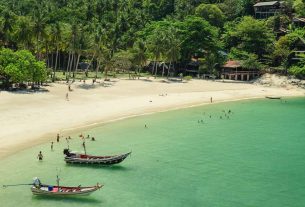ON THE GO
Traveling by plane
Scheduled flights:
Domestic flights are operated by Japan Airlines (JL) and All Nippon Airways (NH). Japan Airlines connects all major cities. All Nippon Airways also flies to smaller cities. The main flight routes are Tokyo – Sapporo, Tokyo – Fukuoka, Tokyo – Osaka and Tokyo – Naha.
Ticket machines are available at the domestic counter at the international airports in Tokyo and Osaka.
On the way by car / bus
Long-distance buses (Internet: http://www.jrbuskanto.co.jp/bus_route_e/) connect the big cities with each other.
Cars: Driving on the crowded streets is not a pleasure, especially since there are only a few traffic signs with Latin letters. In rural areas, a compass and road maps in Latin and Japanese are very helpful. The city centers are often congested. The Keiyo Highway, Tohoku, Tomei, Tokaido, Joban and Meishin Expressway connect the cities on the Pacific coast. The island of Awaji is connected between Akashi and Iwaya to the mainland by a road bridge.
Toll: There is a toll on the motorways.
Documents: Austrian citizens can drive a car in Japan with the Austrian international driving license, German and Swiss citizens need a translation into Japanese in addition to their national driving license. Travelers must have lived in the country of origin for at least three months from the date of issue of the driver’s license. Translations are available from the relevant agencies for a fee.
Traffic regulations:
alcohol limit: 0.0 â?? °;
Left-hand traffic.
Speed limits:
on motorways: 80-100 km / h;
on country roads: 50 km / h.
Traveling in the city
Public transport is excellent and punctual, but overcrowded at peak times (especially in the morning between 8am and 9am). All major cities (Tokyo, Osaka, Kyoto, Nagoya, Yokohama and Sapporo) have a subway network. Orientation in the subway has become very easy: Instead of Japanese names, the lines are provided with letters and the stations with numbers. There are two subway systems, Tokyo Metro Co. Ltd. (Internet: www.tokyometro.jp/e/) operates the Eidan system (8 lines), while the Toei system (Internet: www.kotsu.metro.tokyo.jp) includes 4 lines.
There are various S-Bahn trainslines that are either publicly or privately operated. You can change trains between most of the companies’ trains and continue using the same ticket. The JR Yamanote Railway in Tokyo and the JR Kanjo Railway in Osaka are circular railways around the centers of the two cities. The Yamanote-S train line not only offers a good opportunity to get a first impression of the city, but also stops in the main centers of the city, such as Shibuya, Shinjuku or Tokyo Station. Fares are based on the distance; the destination must be entered in the ticket machine. The tickets must be kept until you leave the station, as they have to be handed in at the exit of the station. Weekly and monthly tickets are available. Inexpensive day tickets for urban public transport are available in Tokyo and Osaka. The suburban trains operated by private companies complement the local transport system. Public transport should be avoided during rush hour.
It is not always easy to take the city buses to use; if you are not traveling with someone familiar with the area, you should have the hotel staff describe the route precisely. Trading cards are available. The fare is often only asked for when you get off the bus (when you get on, you pull a card with the number of the station you are boarding).
Taxi: Particularly expensive in the rush hours 7.30am-9.30am and 5pm-6pm and at night 11pm-5pm A minimum fee is charged for the first 2 km; in the event of traffic jams, the waiting time is also charged. The destination and a nearby known place should be written down in Japanese. It is best to take a map with you, as there are hardly any street names; House numbers are based on the chronological order in which houses were built in a particular district. When the red light is on in the lower left corner of the windshield, the taxi is free. The doors are automatically opened and closed by the driver. For a city tour, a car with an English-speaking driver can be rented by the hour through hotels or travel agencies.
On the go by train
According to youremailverifier, Japan has one of the best rail networks in the world. Trains run at very short intervals on the main routes of the JR Group (Japan Railways Group) (Internet: www.japanrail.com).
The Shinkansen, super-fast express trains, have compartments for wheelchair users as well as dining and buffet cars. They run at top speeds of up to 300 km / h and are an alternative to air travel. Delays are almost unknown. A special surcharge is charged for the express trains and the first-class carriages of the most important trains. Seat reservations are required for first-class cars; early booking is recommended (up to one month in advance is possible). In the Japan Railways Group tickets can also be printed in English. The Shinkansen connects Tokyo with the most important parts of the country several times an hour.
In addition to these high-speed trains, there are also express trains, express trains and local railways. The fares are made up of a basic tariff, which depends on the length of the route, and a surcharge, which varies depending on the type of trains used.




